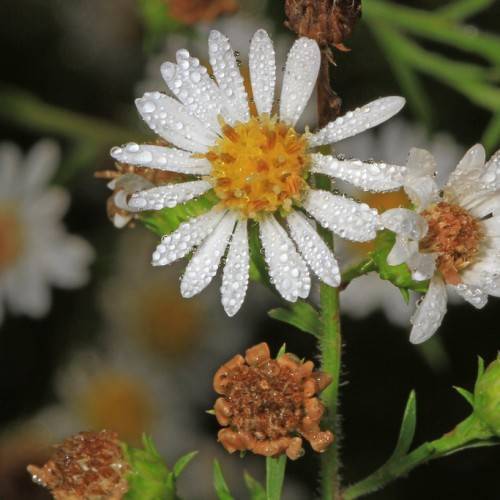
heath aster
Symphyotrichum ericoides
Cycle:
Herbaceous Perennial
Watering:
Minimum
Hardiness Zone:
3 - 10
Flowers:
Flowers
Sun:
Full sun
Soil:
Sandy Loamy Clay Rocky
Leaf:
Yes
Growth Rate:
Low
Maintenance:
Low
Drought Tolerant:
Yes
Salt Tolerant:
Yes
Care Level:
Medium
watering
Water Heath Aster (Symphyotrichum ericoides) plants thoroughly once to twice per week and less if rainfall is sufficient for the season. They prefer a moist but not wet soil. During the summer, when the plants are in bloom, extra water may be necessary during periods of dryness or drought. Water the base of the plant directly using a garden hose or a watering can. Avoid watering from above as this can cause disease and damage to the flowers. When temperatures are warmer, water infrequently but deeply; it can help to reduce stress on the plant. In the winter, only water when the soil is dry.
sunlight
Heath aster (Symphyotrichum ericoides) generally prefers full sun, though it is tolerant of partial shade. It blooms between late summer and early fall, so receiving at least 6 hours of sunlight a day is ideal during this time. If planted in a location that will receive less sun, the plant may not form flower buds and will bloom less profusely. Having said that, many varieties have been bred to be more shade-tolerant and will still perform well in partial shade.
pruning
Heath Aster (Symphyotrichum ericoides) should be pruned in late winter or very early spring. Pruning should be light, removing no more than 1-third of the growth from the previous season. Severe pruning can cause a decrease in flowering for this species. Deadheads should be removed as well to stimulate reblooming.
